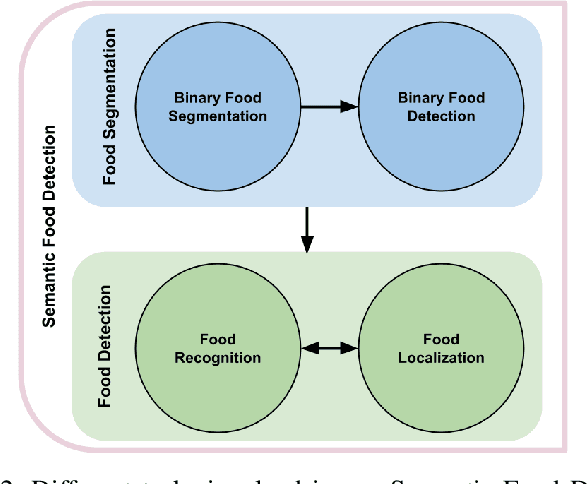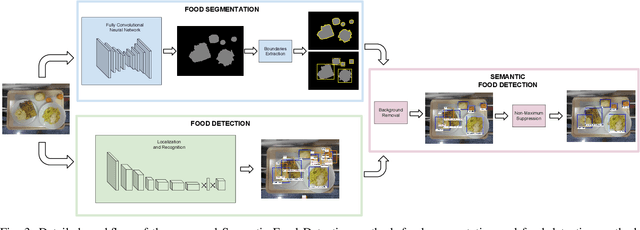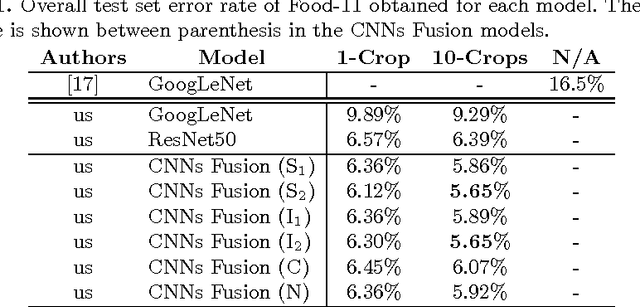Eduardo Aguilar
Multi-label out-of-distribution detection via evidential learning
Feb 25, 2025Abstract:A crucial requirement for machine learning algorithms is not only to perform well, but also to show robustness and adaptability when encountering novel scenarios. One way to achieve these characteristics is to endow the deep learning models with the ability to detect out-of-distribution (OOD) data, i.e. data that belong to distributions different from the one used during their training. It is even a more complicated situation, when these data usually are multi-label. In this paper, we propose an approach based on evidential deep learning in order to meet these challenges applied to visual recognition problems. More concretely, we designed a CNN architecture that uses a Beta Evidential Neural Network to compute both the likelihood and the predictive uncertainty of the samples. Based on these results, we propose afterwards two new uncertainty-based scores for OOD data detection: (i) OOD - score Max, based on the maximum evidence; and (ii) OOD score - Sum, which considers the evidence from all outputs. Extensive experiments have been carried out to validate the proposed approach using three widely-used datasets: PASCAL-VOC, MS-COCO and NUS-WIDE, demonstrating its outperformance over several State-of-the-Art methods.
Continual Evidential Deep Learning for Out-of-Distribution Detection
Sep 06, 2023Abstract:Uncertainty-based deep learning models have attracted a great deal of interest for their ability to provide accurate and reliable predictions. Evidential deep learning stands out achieving remarkable performance in detecting out-of-distribution (OOD) data with a single deterministic neural network. Motivated by this fact, in this paper we propose the integration of an evidential deep learning method into a continual learning framework in order to perform simultaneously incremental object classification and OOD detection. Moreover, we analyze the ability of vacuity and dissonance to differentiate between in-distribution data belonging to old classes and OOD data. The proposed method, called CEDL, is evaluated on CIFAR-100 considering two settings consisting of 5 and 10 tasks, respectively. From the obtained results, we could appreciate that the proposed method, in addition to provide comparable results in object classification with respect to the baseline, largely outperforms OOD detection compared to several posthoc methods on three evaluation metrics: AUROC, AUPR and FPR95.
Grab, Pay and Eat: Semantic Food Detection for Smart Restaurants
Nov 14, 2017



Abstract:The increase in awareness of people towards their nutritional habits has drawn considerable attention to the field of automatic food analysis. Focusing on self-service restaurants environment, automatic food analysis is not only useful for extracting nutritional information from foods selected by customers, it is also of high interest to speed up the service solving the bottleneck produced at the cashiers in times of high demand. In this paper, we address the problem of automatic food tray analysis in canteens and restaurants environment, which consists in predicting multiple foods placed on a tray image. We propose a new approach for food analysis based on convolutional neural networks, we name Semantic Food Detection, which integrates in the same framework food localization, recognition and segmentation. We demonstrate that our method improves the state of the art food detection by a considerable margin on the public dataset UNIMIB2016 achieving about 90% in terms of F-measure, and thus provides a significant technological advance towards the automatic billing in restaurant environments.
Food Recognition using Fusion of Classifiers based on CNNs
Sep 14, 2017



Abstract:With the arrival of convolutional neural networks, the complex problem of food recognition has experienced an important improvement in recent years. The best results have been obtained using methods based on very deep convolutional neural networks, which show that the deeper the model,the better the classification accuracy will be obtain. However, very deep neural networks may suffer from the overfitting problem. In this paper, we propose a combination of multiple classifiers based on different convolutional models that complement each other and thus, achieve an improvement in performance. The evaluation of our approach is done on two public datasets: Food-101 as a dataset with a wide variety of fine-grained dishes, and Food-11 as a dataset of high-level food categories, where our approach outperforms the independent CNN models.
Exploring Food Detection using CNNs
Sep 14, 2017



Abstract:One of the most common critical factors directly related to the cause of a chronic disease is unhealthy diet consumption. In this sense, building an automatic system for food analysis could allow a better understanding of the nutritional information with respect to the food eaten and thus it could help in taking corrective actions in order to consume a better diet. The Computer Vision community has focused its efforts on several areas involved in the visual food analysis such as: food detection, food recognition, food localization, portion estimation, among others. For food detection, the best results evidenced in the state of the art were obtained using Convolutional Neural Network. However, the results of all these different approaches were gotten on different datasets and therefore are not directly comparable. This article proposes an overview of the last advances on food detection and an optimal model based on GoogLeNet Convolutional Neural Network method, principal component analysis, and a support vector machine that outperforms the state of the art on two public food/non-food datasets.
 Add to Chrome
Add to Chrome Add to Firefox
Add to Firefox Add to Edge
Add to Edge